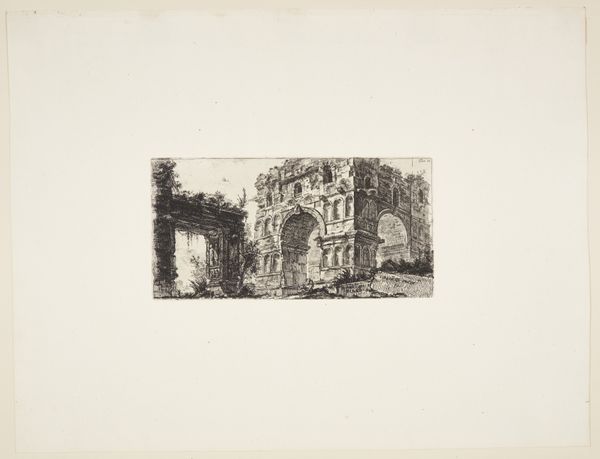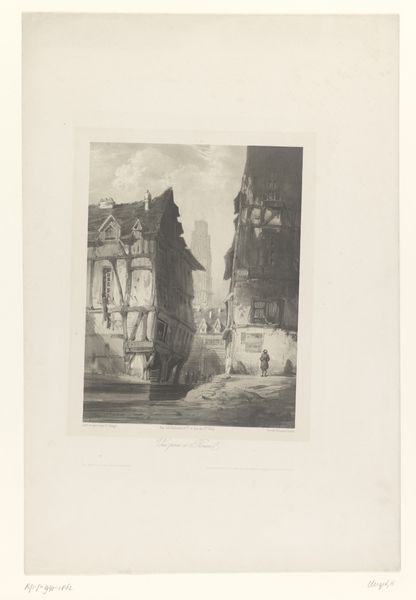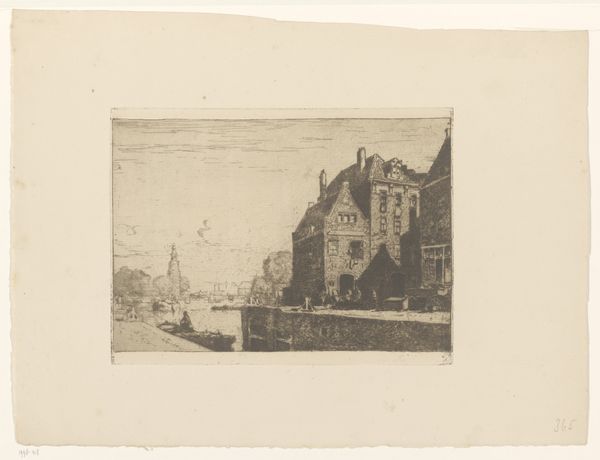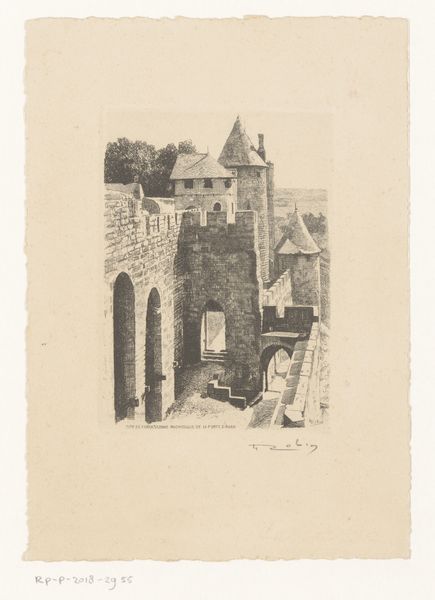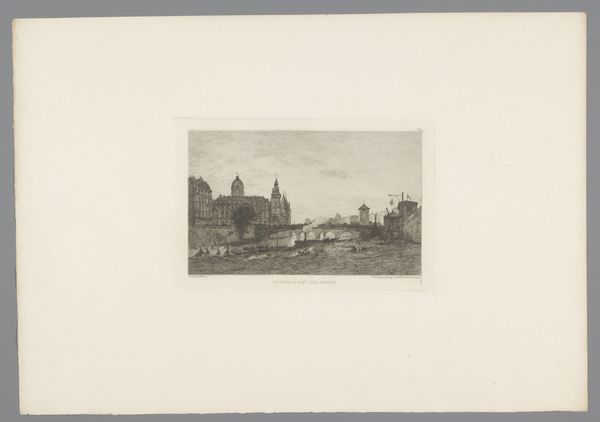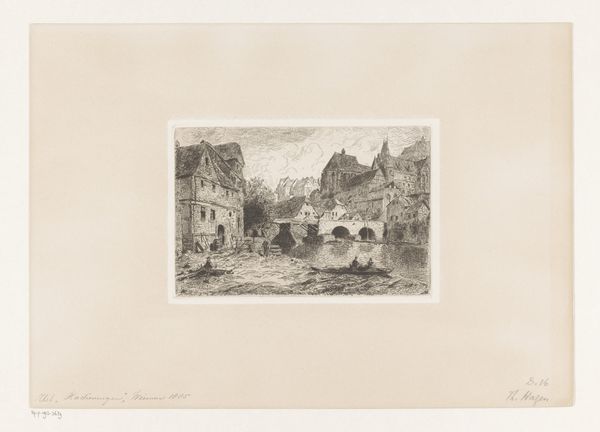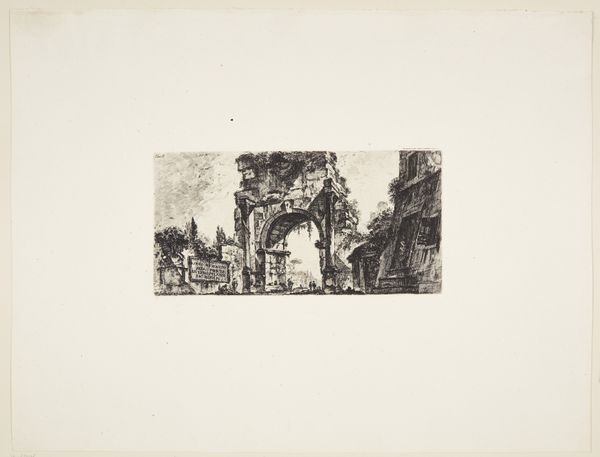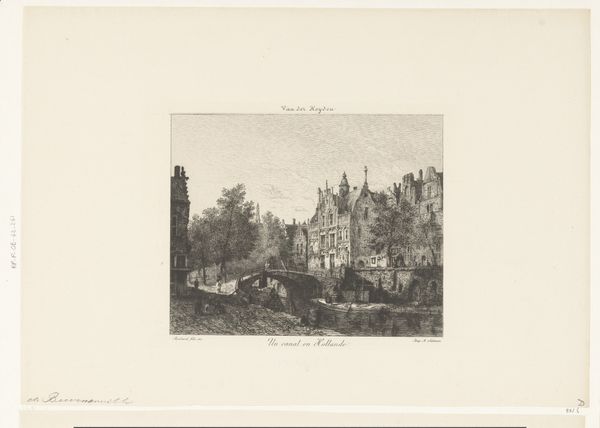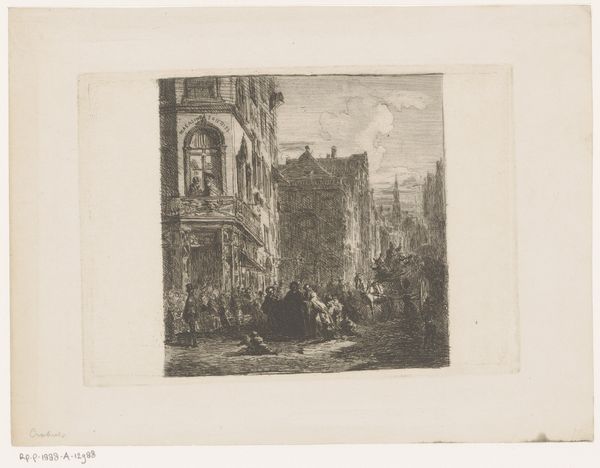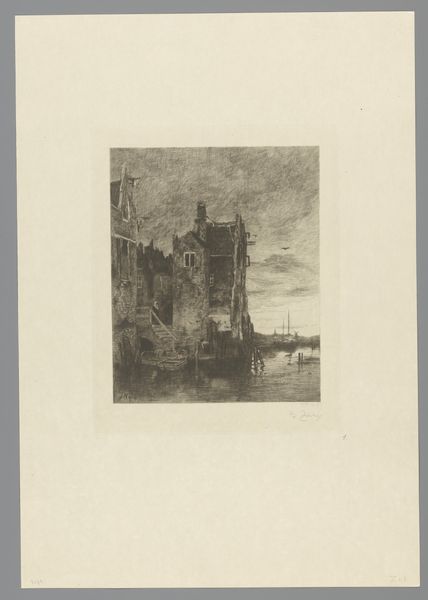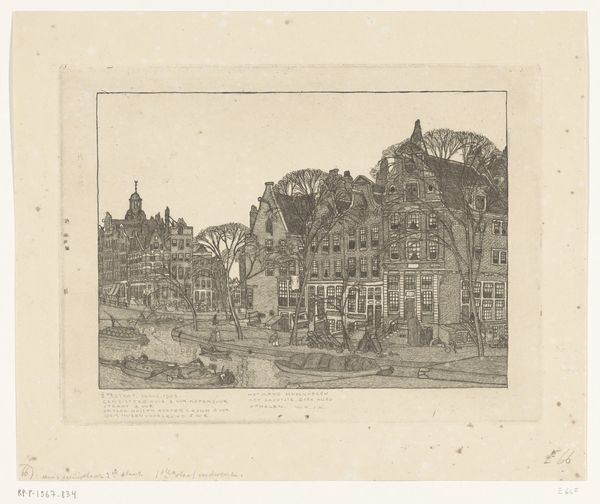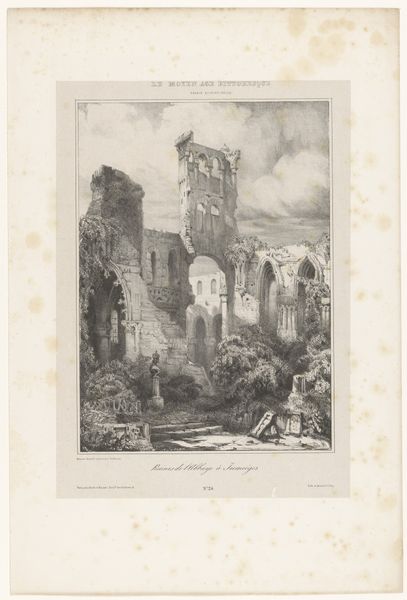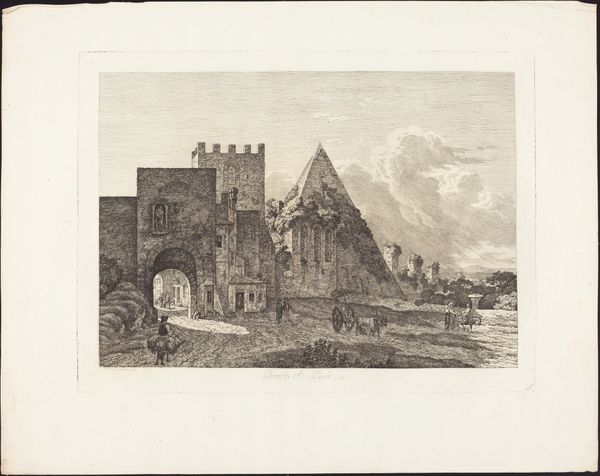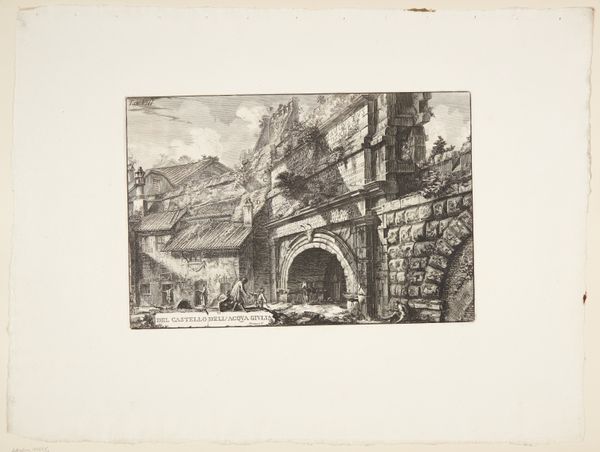
Gezicht op de Saint-Julien-le-Pauvre-kerk in Parijs met vrouw en spelende kinderen 1874
0:00
0:00
print, etching
#
16_19th-century
# print
#
etching
#
landscape
#
cityscape
#
realism
Dimensions: height 237 mm, width 316 mm
Copyright: Rijks Museum: Open Domain
Editor: We're looking at Gabrielle-Marie Niel's etching from 1874, "Gezicht op de Saint-Julien-le-Pauvre-kerk in Parijs met vrouw en spelende kinderen," which translates to "View of the Saint-Julien-le-Pauvre Church in Paris with woman and children playing". I'm really struck by the stark contrast and how the rigid architecture softens a bit with the figures in the foreground. How do you read this piece? Curator: Primarily, I am drawn to the formal structure. The composition hinges on a compelling interplay of textures. Note how the etching technique meticulously renders the rough-hewn stone of the church in the foreground. What effect does this juxtaposition of meticulous detail against the more loosely defined background have? Editor: It almost flattens the space. The sharpness makes the church feel closer, even though perspective suggests otherwise. Curator: Precisely! Niel subverts traditional perspective. Consider also the linear quality—how the etching lines themselves create form. What can you say about the balance between light and shadow, or *chiaroscuro*? Editor: There isn't a ton of contrast in tone overall, so I read the architectural forms as more important, because of the consistency in linework. Curator: Indeed. Niel prioritizes the delineation of form through line, emphasizing structure. This method gives the image a sense of solidity and permanence, anchoring it to the physical reality of the church itself. Observe the placement of the figures as well. They almost act as an additional anchor for the weighty structure. Editor: I see what you mean, there’s a dialogue between the solid mass of the church and the delicate rendering of figures below. The building doesn’t overwhelm the image, or those smaller human subjects within. I am definitely walking away with a deeper appreciation for the relationship of foreground and background that can happen using techniques in printmaking!
Comments
No comments
Be the first to comment and join the conversation on the ultimate creative platform.
